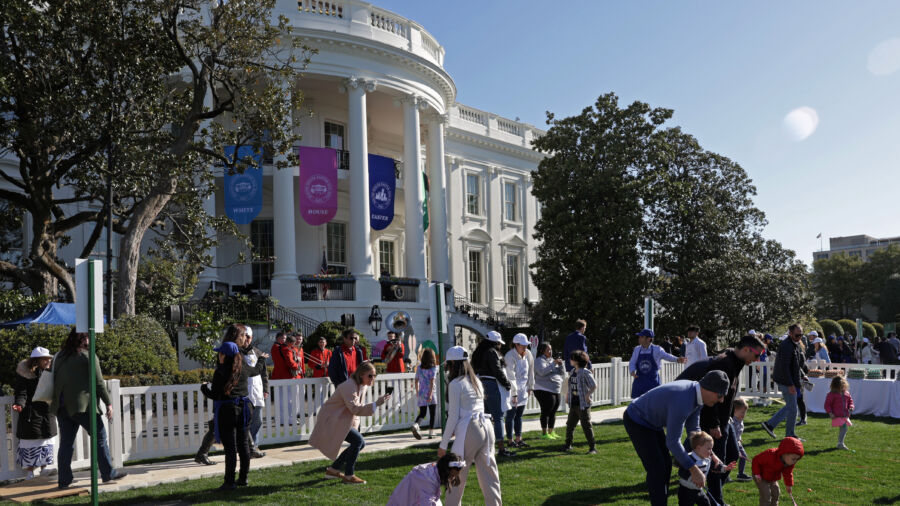An annual Easter egg art contest at the White House that involves children of National Guard members has banned religious-themed designs along with “partisan political statements.”
The contest flyer says that Easter egg designs submitted “must not include any questionable content, religious symbols, overtly religious themes, or partisan political statements.”
“As part of the White House Easter traditions, America’s Egg Farmers—for nearly 50 years—have proudly presented an intricately decorated Commemorative Easter Egg to the First Lady of the United States. In 2021, the White House expanded on this longstanding tradition by displaying youth-designed Easter eggs in the White House East Colonnade,” the flyer stated.
The idea behind the contest is that children design eggs based on their life experiences.
“Selected designs representing the unique experience and stories of National Guard children will be brought to life on real hen eggs by talented egg artists from across the country and displayed at the White House this Easter and Passover season,” the flyer says.
Children are also instructed not to promote “bigotry, racism, hatred or harm against any group or individual or promotes discrimination based on race, gender, religion, nationality, disability, sexual orientation or age.”
Emily Metz, president and CEO of the American Egg Board, a group that supports the White House Egg Roll, said in a statement, “The American Egg Board has been a supporter of the White House Easter Egg Roll for over 45 years and the guideline language referenced in recent news reports has consistently applied to the board since its founding, across administrations.”
The contest is held by First Lady Jill Biden as part of the White House’s Easter celebration.
Designs selected as contest winners will be painted on real eggs by artists and displayed at the White House over the Easter holiday, including the annual Easter Egg Roll held on the Monday after Easter.
The event will have an “EGGucation” theme as it has since the First Lady, a longtime educator, has been in charge.
Other parts of the event will include an Easter egg hunt, a Physical “Eggucation” (PE) Zone, a School House Activity Area, Reading Nook, Field Trip to the Farm, Picture Day, and a snack tent. Children’s entertainment will be performed on a “School House stage” on the South Lawn.
The annual Easter egg roll has been held at the White House since 1878 when Rutherford B. Hayes was president and has drawn as many as 50,000 children in previous years.
Easter holds the highest religious significance to Christians; it is when they celebrate the resurrection of Jesus after he was crucified by Roman authorities and Jewish religious leaders around 2,000 years ago.
The decoration of eggs at Easter dates back to at least the 13th century. An ancient symbol of new life, it was originally used in pagan festivals to celebrate the new life that grew in spring. Christians see the eggs as representing Jesus leaving the tomb when he was resurrected.
Eggs were also a forbidden food during Lent, the 40-day season of fasting that precedes Easter in many Christian faith traditions. Traditionally, Christians would paint the eggs before Easter and then eat them to celebrate the holiday, which ended the period of fasting.
The Easter Bunny who is said to bring eggs and candy to children all over the world on Easter morning may have come to the U.S. as a tradition from German immigrants in the 1700s. German Easter traditions state that the bunny would lay colored eggs for the children to enjoy. Candy was later added to the tradition.
Easter is now the second best-selling holiday in America for candy sales, following only Halloween.
Chocolate eggs and jelly beans, which are also shaped like eggs, are popular candies for Easter. Peeps, a marshmallow candy made by Just Born, Inc., are made in the shape of bunnies and chicks for the season.
Lamb and other traditional Jewish Passover foods are also popular around Easter. This is because Jesus was crucified on Passover and Christians recognize him as having sacrificed himself for people’s sins, just as the lamb was sacrificed in the Passover meal.

